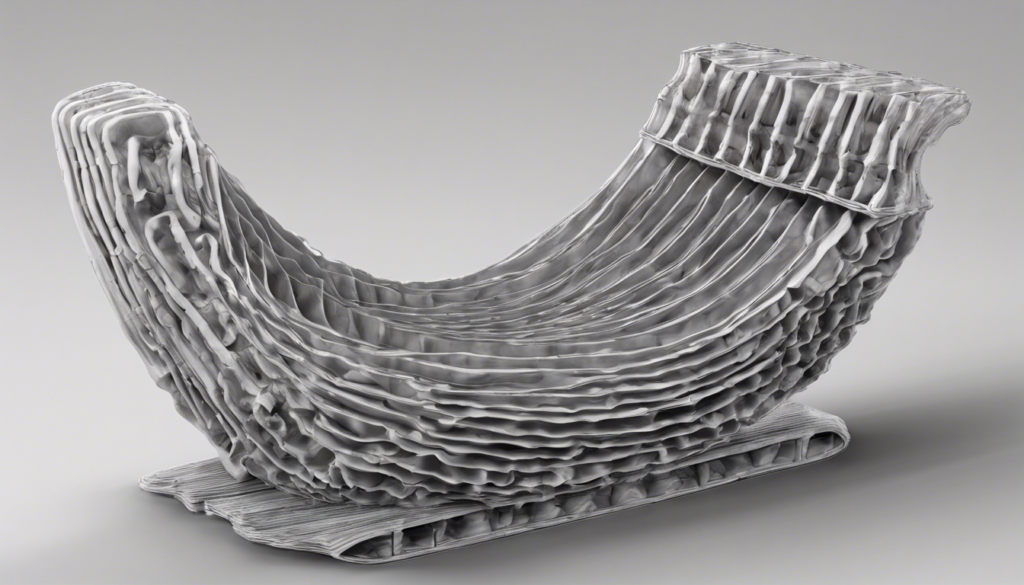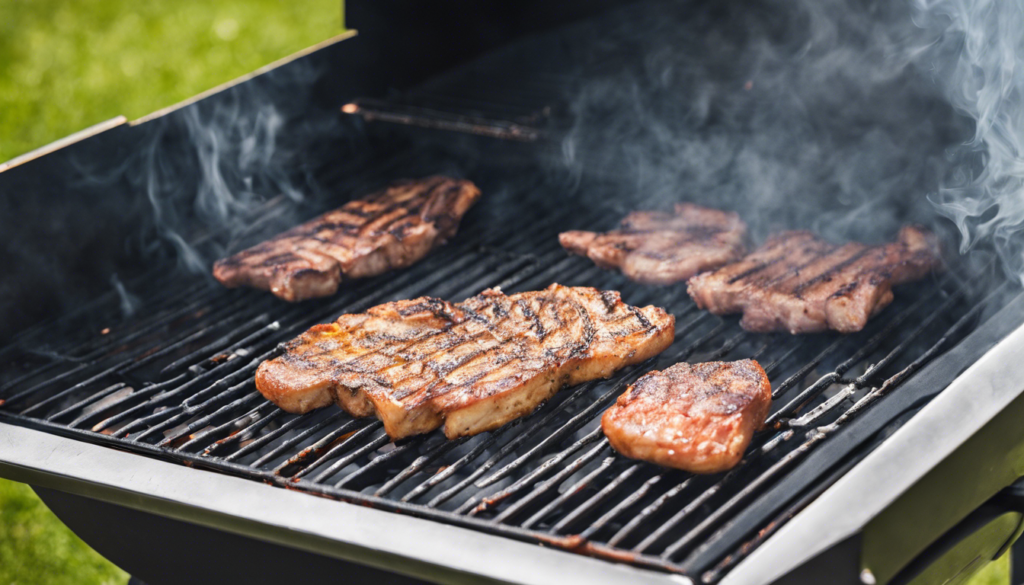Unveiling the Culinary Zen: The Art of Resting Ribs
Imagine savoring a plate of ribs that are so tender, they practically melt in your mouth. The secret to achieving this gastronomic delight lies not just in the cooking process, but also in the art of resting ribs. This often overlooked step in cooking ribs can make all the difference between a good and a great meal. Let’s delve into the world of culinary zen and understand the importance of resting ribs.
The Importance of Resting in Cooking
Resting is a critical step in cooking, especially when it comes to meats. It allows the juices to be reabsorbed into the meat, resulting in a moist and flavorful dish. Skipping this step can lead to a dry and less tasty outcome. When it comes to ribs, resting is even more crucial due to the nature of the meat and the long cooking times often involved.
Resting ribs allows the meat fibers to relax after the stress of cooking, making them more tender. Additionally, it gives the flavors time to meld together, enhancing the overall taste of the ribs. So, the next time you cook ribs, remember to rest them. It’s a simple step that can elevate your dish to a whole new level.
The Culinary Zen: Understanding the Importance of Resting Ribs
The concept of culinary zen is about finding balance and harmony in cooking. It’s about understanding each step of the process and how it contributes to the final dish. Resting ribs is a perfect example of culinary zen. It’s a step that requires patience and understanding, but the result is well worth the wait.
Resting ribs is not just about letting them sit after cooking. It’s about giving the meat time to reabsorb the juices, resulting in a moist and flavorful dish. It’s about allowing the flavors to meld together, creating a harmonious and delicious combination. It’s about achieving the perfect texture and taste, making your ribs a true culinary masterpiece.
The Science Behind Resting Ribs
Resting ribs is not just a culinary technique, it’s also a science. Let’s explore how resting affects the texture, moisture retention, and flavor enhancement of ribs.
How Resting Affects the Texture of Ribs
When ribs are cooked, the heat causes the proteins in the meat to tighten, squeezing out the juices. If you cut into the ribs immediately after cooking, these juices will run out, leaving the meat dry and tough. However, if you let the ribs rest, the proteins will have time to relax and reabsorb the juices, resulting in a tender and juicy texture.
The Role of Resting in Moisture Retention
The key to moist and juicy ribs is moisture retention. During the cooking process, the heat causes the moisture in the meat to evaporate. However, by allowing the ribs to rest after cooking, the moisture has time to be reabsorbed into the meat, enhancing its juiciness. This is why rested ribs are often more moist and flavorful than those that are not rested.
The Impact of Resting on Flavor Enhancement
Resting ribs also plays a crucial role in flavor enhancement. As the meat rests, the flavors have time to meld together, creating a more complex and delicious taste. The natural juices in the meat, along with any marinades or rubs used during cooking, are reabsorbed into the meat, intensifying the flavor. This is why rested ribs often have a deeper and more robust flavor than those that are not rested.
The Process of Resting Ribs
Now that we understand the science behind resting ribs, let’s look at the process. How do we prepare ribs for resting? What is the ideal resting time and temperature? Let’s find out.
Preparing Ribs for Resting
Preparing ribs for resting is a straightforward process. After the ribs are cooked, remove them from the heat and place them on a cutting board or platter. Cover them loosely with aluminum foil to keep them warm and prevent them from drying out. It’s important to note that the ribs should not be cut into immediately after cooking, as this will cause the juices to run out.
Ideal Resting Time for Ribs
The ideal resting time for ribs depends on the size and type of the ribs, as well as the cooking method used. However, a general rule of thumb is to rest the ribs for at least 10-15 minutes after cooking. This gives the meat enough time to reabsorb the juices and the flavors to meld together.
Proper Temperature for Resting Ribs
The proper temperature for resting ribs is room temperature. It’s important to keep the ribs warm during the resting process to prevent them from cooling down too quickly. Covering the ribs with aluminum foil can help maintain the temperature and keep the ribs warm.
Common Mistakes in Resting Ribs
Resting ribs may seem like a simple process, but there are a few common mistakes that can affect the outcome. Let’s look at some of these mistakes and how to avoid them.
Rushing the Resting Process
One of the most common mistakes in resting ribs is rushing the process. It’s understandable to want to dig into your delicious ribs as soon as they’re cooked, but patience is key. Rushing the resting process can result in dry and less flavorful ribs. Remember, good things come to those who wait!
Incorrect Resting Temperature
Another common mistake is resting the ribs at the wrong temperature. If the ribs are too hot, the juices will evaporate instead of being reabsorbed into the meat. If the ribs are too cold, the reabsorption process will be slower and less effective. The ideal resting temperature for ribs is room temperature.
Over-resting Ribs: Is there such a thing?
While it’s important to rest ribs, it’s also possible to over-rest them. If ribs are rested for too long, they can become cold and lose their juiciness. The key is to find the right balance. As a general rule, ribs should be rested for about 10-15 minutes after cooking.
Tips and Techniques for Perfectly Rested Ribs
Now that we’ve covered the basics, let’s look at some tips and techniques for perfectly rested ribs. From using foil to understanding the role of a meat thermometer, these tips will help you achieve culinary zen with your ribs.
Using Foil for Resting Ribs
Using foil to cover the ribs during the resting process can help keep them warm and prevent them from drying out. Simply place the ribs on a cutting board or platter and loosely cover them with aluminum foil. Be careful not to wrap the ribs too tightly, as this can trap steam and make the ribs soggy.
The Role of a Meat Thermometer in Resting Ribs
A meat thermometer can be a useful tool in the resting process. It can help you ensure that the ribs are at the right temperature during resting. The ideal resting temperature for ribs is room temperature, so a meat thermometer can help you monitor this.
How to Keep Rested Ribs Warm
Keeping rested ribs warm is important to maintain their juiciness and flavor. There are a few ways to do this. One method is to cover the ribs with aluminum foil, as mentioned earlier. Another method is to place the ribs in a warm oven. Just be sure to monitor the temperature to prevent the ribs from cooking further.
The Impact of Resting on Different Types of Ribs
The impact of resting can vary depending on the type of ribs and the cooking method used. Let’s look at how resting affects pork ribs vs beef ribs, smoked ribs, and ribs cooked in different styles.
Resting Pork Ribs vs Beef Ribs
Both pork and beef ribs can benefit from resting. However, the impact can be slightly different due to the differences in the meat. Pork ribs tend to be more tender and juicy, so the resting process can enhance these qualities. On the other hand, beef ribs are more robust and flavorful, so resting can help intensify these flavors.
The Effect of Resting on Smoked Ribs
Smoked ribs can greatly benefit from resting. The smoking process imparts a deep and complex flavor to the ribs, and resting allows these flavors to meld together and intensify. Additionally, resting helps the ribs retain their moisture, which can be lost during the long smoking process.
Resting Ribs Cooked in Different Styles
Regardless of the cooking style, resting ribs can enhance their texture, flavor, and juiciness. Whether the ribs are grilled, baked, smoked, or slow-cooked, resting is a key step in achieving the perfect ribs.
Conclusion: Mastering the Art of Resting Ribs
In conclusion, resting ribs is an essential step in the cooking process. It’s a simple technique that can make a big difference in the texture, flavor, and juiciness of the ribs. So, the next time you cook ribs, remember to rest them. It’s the key to achieving culinary zen with your ribs.
Recap of the Importance of Resting Ribs
Resting ribs allows the meat fibers to relax, the juices to be reabsorbed, and the flavors to meld together. It enhances the texture, flavor, and juiciness of the ribs, making them more delicious and enjoyable. It’s a step that requires patience and understanding, but the result is well worth the wait.
The Culinary Zen: Achieving Perfection in Resting Ribs
Achieving perfection in resting ribs is about understanding the process and finding balance. It’s about giving the meat time to rest and reabsorb the juices, allowing the flavors to meld together, and maintaining the right temperature. With these tips and techniques, you can master the art of resting ribs and achieve culinary zen.


